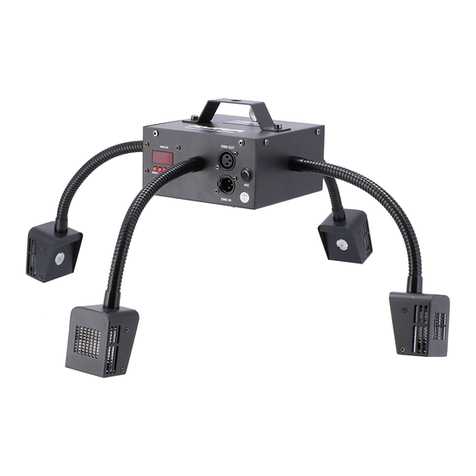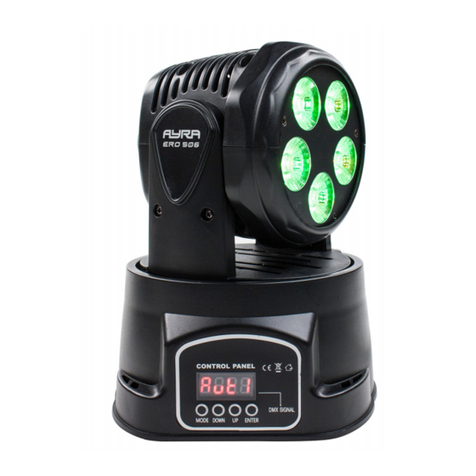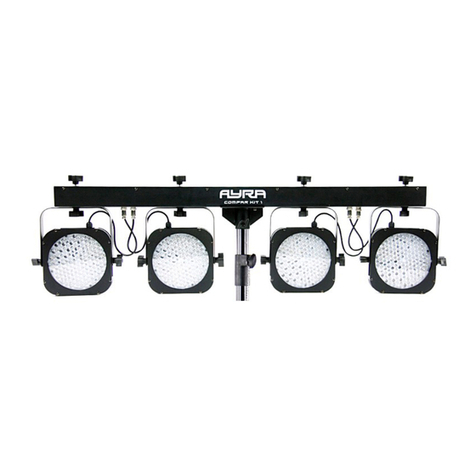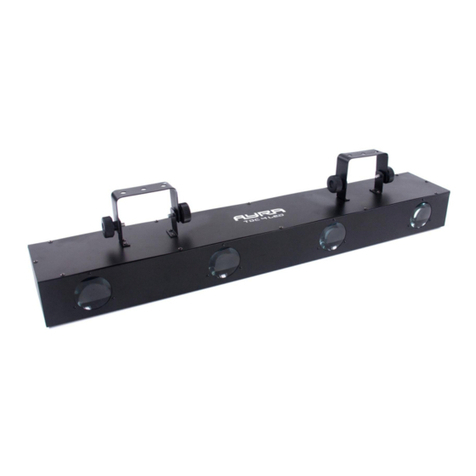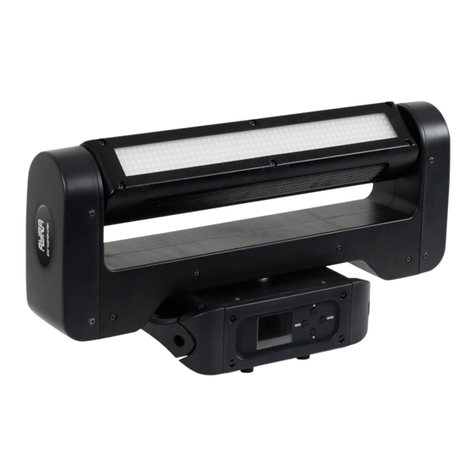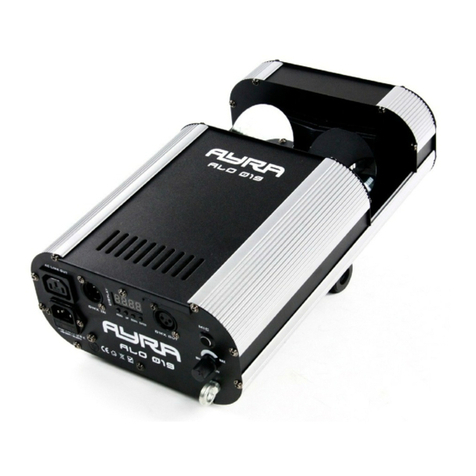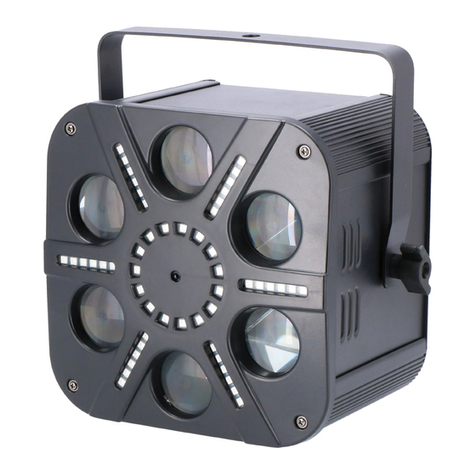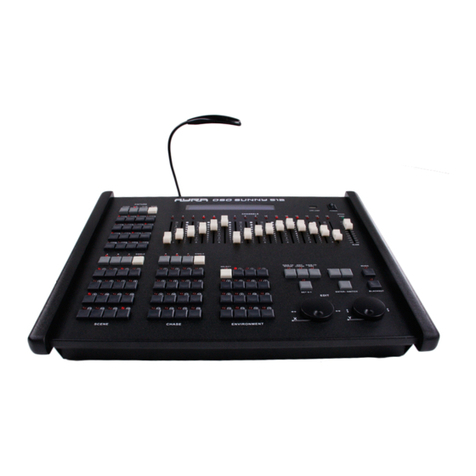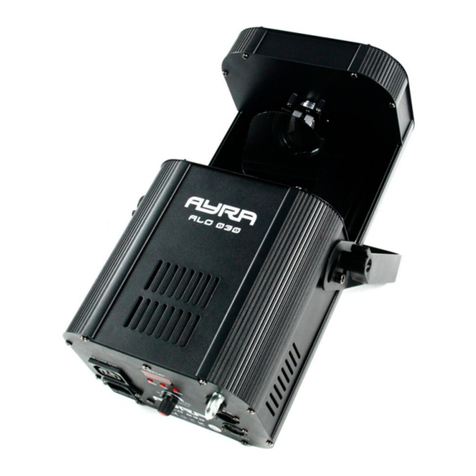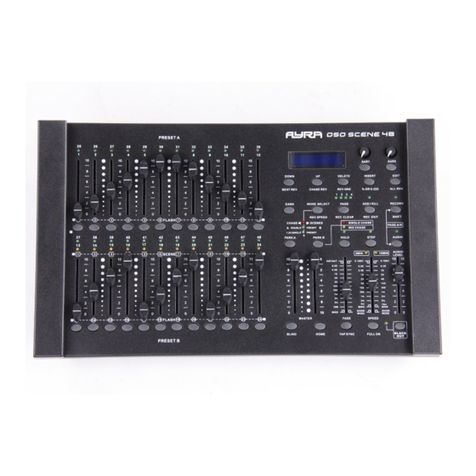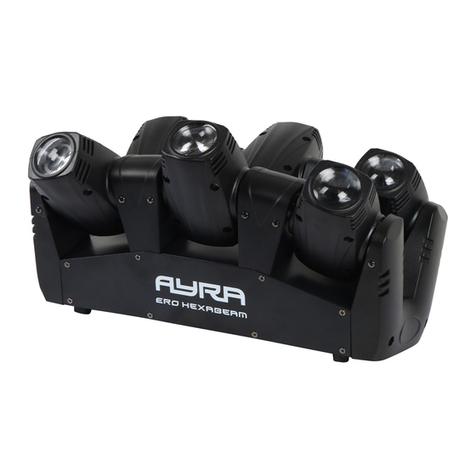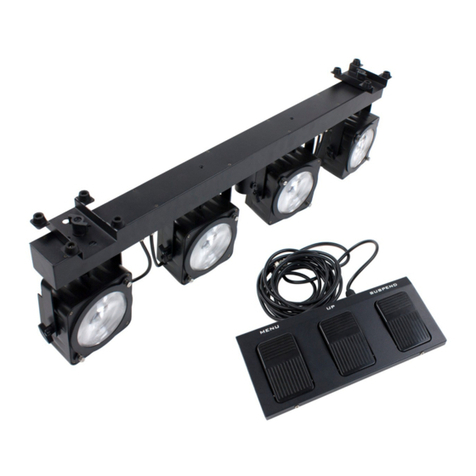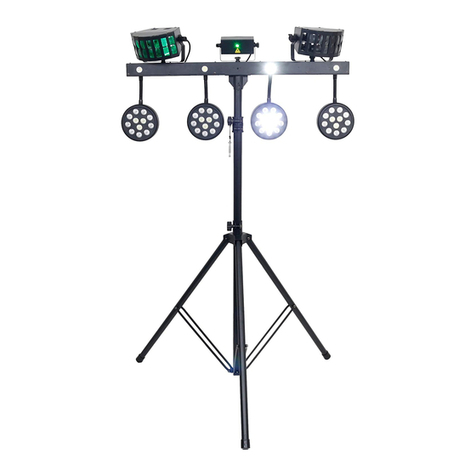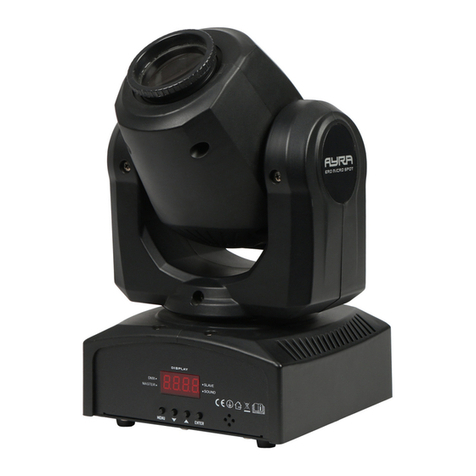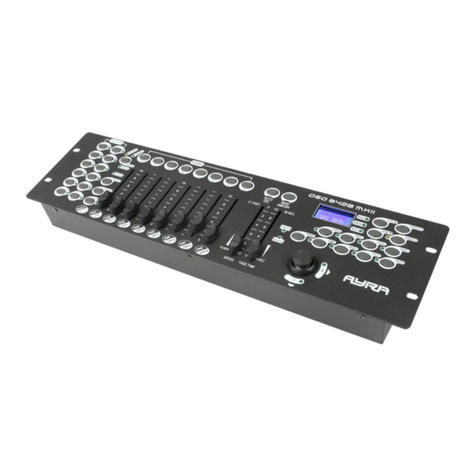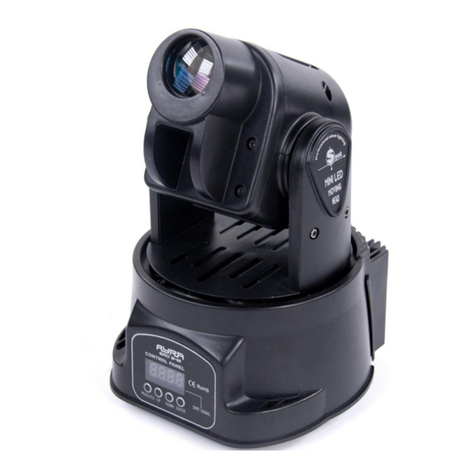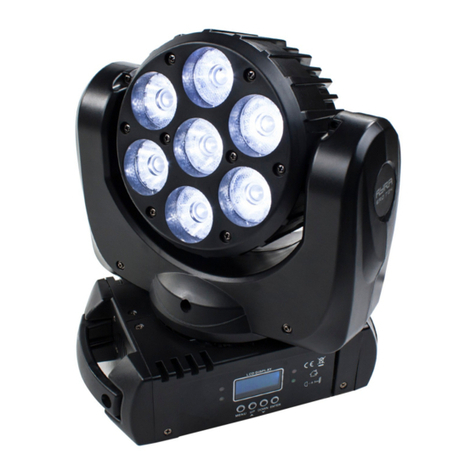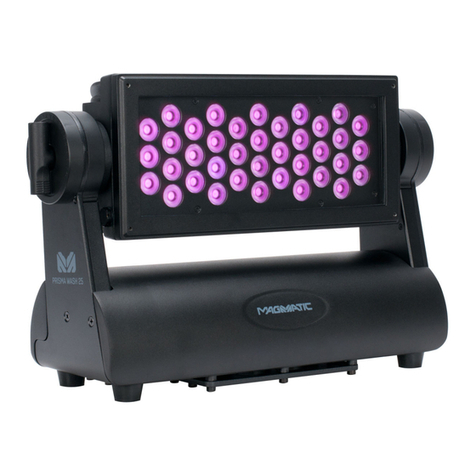RSET Reset function Reset the device (has the same affect as turning
the po er off and on again)
You'll find an explanation of the various functions belo :
ADDR: With this function, you can determine the DMX start address of the device. Set it channel 001, and
the device ill respond from DMX channel 1. Set it to channel 003, then the device ill respond from DMX
channel 3, etc.
CHND: This device is equipped ith various DMX channel modes. With this function, you can choose a
concise channel mode if your DMX circle is full and you do not require complete control over the functions. It
is also possible to use the most comprehensive channel mode, hich makes more channels available, each
ith its o n separate function.
SLND: The Master-Slave mode is designed to sync multiple devices. A copy of the internal program is sent
to the daisy-chained devices so that each one projects the same effect. The master-slave function orks by
means of standard 3-pin XLR cables. The only difference is that the first device in the chain does not receive
DMX input. In Slave 1 mode, the device ill copy the exact signal directly from the Master.
PLEASE NOTE: When Slave mode is activated, the device ill ait for a signal from the Master device. In
this case it is not possible to simply select an automatic or sound-controlled mode! To cancel this, select
'NAST' mode in the SLND menu, so the device goes to Master mode. Then, all standalone functions can be
activated.
SHND: This mode consists of automatic programs designed for sound-controlled operation. In sound-
controlled mode, the device uses the built-in microphone that can be activated by means of the SOUN
setting and adjusted in sensitivity. Any time the microphone detects sound, the device ill change movement
and/or colour in a ay that syncs perfectly ith your light sho . If no sound is detected, the device ill move
slo ly and change colour gradually until sound is detected again.
AUTO: With this mode, you can select the same automatic programs as in the SHND mode, but they run at
an automatic speed. The user can adjust the speed bet een 1 and 9, here 1 is the slo est and 9 is the
fastest speed.
SOUN: This setting sho s if the microphone function is activated or not, hich you can see in the display as
ON or OFF.
SENS: This mode allo s you to determine the sensitivity of the internal microphone. The further the device is
from the speaker, the higher the sensitivity of the microphone needs to be so it can react properly to the
music. The microphone is built to handle high sound pressure levels, but the louder the signal the higher the
microphone sensitivity level, the more difficulty the device ill have detecting the beat of the music.
Experiment ith the level of sensitivity and distance/positioning of the device to find the best results.
LED: If the LED display is not in use, it can be de-activated by turning the LED mode OFF. The red symbols
ill no longer light up hen using the device in a dark environment. Press one of the menu buttons and the
display ill light up again and sho any relevant information. If the device registers that the menu is not
actively being used, it ill automatically turn off ithin 30 seconds.
DISP: This function determines hether the display is sho n normally or inverted. If the device is
suspended, the display may be harder to read. This function allo s you to rotate it vertically for better
legibility.
PAN/TILT: Invert the pan and/or tilt values separately to make the motors turn in the opposite direction. This
function is available for all modes.
TEST: Should the device need cleaning or maintenance, this function can be used to test one or more
devices simultaneously. The device plays a continuous program hile the step motors and LEDs are used.
This ay you can quickly detect any abnormalities or defects. The device ill run the program until stopped
manually (for example hen the sound-controlled mode is activated.)
The information in this user manual is subject to change at any time without notice.
Version: 1.0 Date of creation and author's initials:23-02-2017 RV Revision date and author's initials: -
